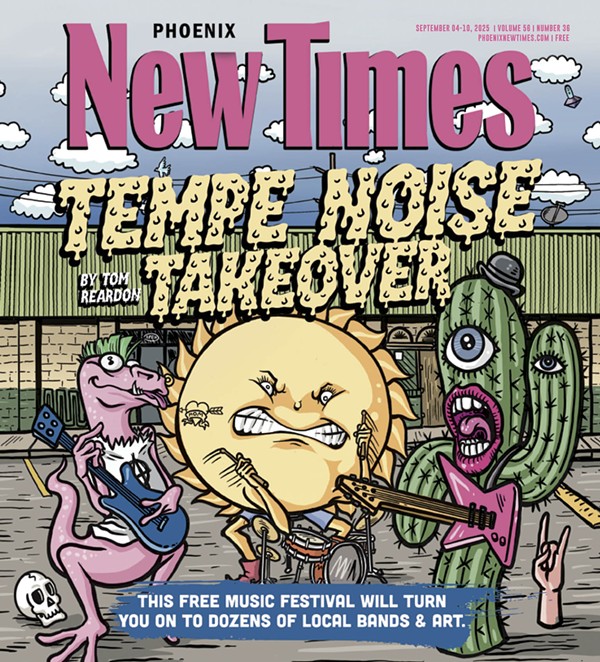At first glance, the dark green leaves of the Mitragyna speciosa tree look no more remarkable than mint leaves. They're large, somewhat oval in shape, and smooth to the touch. The trees are indigenous to Southeast Asia, and their leaves, known as kratom, have been used as a traditional medicine in Thailand and Asian countries for centuries. Kratom made its way to the United States as an herbal medicine decades ago but has become something else in the past few years: the latest popular consumable in the "legal drug" market of the United States.
Unlike previous hot products at head shops, like spice and "bath salts" (which contain synthetic compounds made in labs), kratom is completely organic. It has its share of proponents, who espouse its supposed medicinal benefits, and opponents who say it's a dangerous drug. Kratom is currently legal to buy and sell in the states and won't show up on standard drug tests.
Kratom is sold as raw or crushed leaves that can be smoked or steeped for tea, and also in gel caps. Potencies and strains vary, as do prices (generally $15 to $50 per five-gram packet, or $18 to $25 for about 50 capsules). Doses generally range from two to 10 grams. It's widely available online through sites like thekratomking.com, kratom.pro, Phoenix-based site kratommarket.com, and at various head shops around the Valley and United States.
Though it is currently uncontrolled in the states, kratom has been banned in Bhutan, Australia, Finland, Denmark, Poland, Lithuania, Malaysia, Myanmar (Burma), and Thailand, where it is reportedly the third most popular drug, behind meth and marijuana.
The U.S. Drug Enforcement Administration's Office of Diversion Control lists kratom as a "Drug and Chemical of Concern" and says there's no legitimate medical use for kratom in the United States. A DEA report issued in December 2010 says pharmacology studies show that kratom has "opioid-like activity in animals," reducing pain, producing "sedative and euphoric effects," and a host of side effects including nausea, constipation, loss of appetite, and even "psychotic symptoms" in "kratom addicts," including "hallucinations, delusion, and confusion."
Dr. Frank LoVecchio, co-medical director of the Banner Good Samaritan Poison & Drug Information Center based here in Arizona, says he's treated five patients who used kratom and hasn't seen any terrible side effects.
"For every one or two patients I see that come in, there are probably dozens who do it and don't get into trouble," LoVecchio says. "In the few cases I've seen, it doesn't cause crazy symptoms. People get a little sleepy. I'm not sure what would happen if somebody OD'd." (To date, there's never been a reported fatal overdose of kratom.)
So far, there have been only a handful of scientific studies on kratom's effects on mammals. What is known is that there are more than 25 naturally occurring alkaloids in kratom leaves, and the two believed to be most active on opium receptors in the human brain are mitragynine and 7-hydroxymitragynine. A study by Doctor K.L.R. Jansen and Professor C.J. Prast, published in 1988 in the Journal of Ethnopharmacology, reports that kratom showed opiate-like effects (such as analgesia and cough suppression) in animals. These effects were confirmed by recent research at the Universiti Sains Malaysia and the December 2010 report published by the DEA.
Though these alkaloids act on opiate receptors, the chemical structure of mitragynine and 7-hydroxymitragynine in kratom are different from the structure of morphine, which is the most abundant alkaloid in opium. Kratom alkaloids will not cause a false-positive drug test for opiates, according to LoVecchio, provided the kratom used was pure. And as with any unregulated product, that's no guarantee. "I'd be curious if the stuff they're selling on the Internet is actually kratom or crushed-up Percocet or something," he says.
LoVecchio says pure kratom "will be missed on drugs of abuse screen, but . . . we can find this on a urine comprehensive drug screen." But such tests are not always performed, LoVecchio adds, because they're so expensive.
In addition to the risk of buying contaminated kratom products, there's also the matter of potential addiction. A 2004 study on the tolerance and withdrawal effects of kratom in mice conducted jointly by the Josai International University in Japan and Chulalongkorn University in Thailand concluded that tolerance to 7-hydroxymitragynine developed "as occurs to morphine," and there was evidence of cross-tolerance to morphine, as well. Withdrawal symptoms also were observed.
LoVecchio says that two of the kratom users he's treated (both younger men) "said they really wanted to get back on it. The withdrawal is described as similar to opiate withdrawal."
Withdrawal from opiate addiction can be rough, says Lloyd Vacovsky, founder and director of Assisted Recovery Centers of America, who's been treating opiate addicts for more than 15 years. "The detox is what keeps most people addicted," he says, speaking from his Phoenix area office. "The withdrawal with opiates is nasty — it can take two weeks. One minute, you've got diarrhea. The next minute, you're vomiting, and then you've got chills. People crave the opiates, 'just once, to feel normal.' The fear of withdrawal and not feeling normal supersedes the fear of having to go through detox all over again."
Because chemicals in kratom act on opiate receptors in the brain, it has sometimes been used to treat opium dependence. But Vacovsky doesn't see kratom as a viable part of addiction treatment.
He says part of effectively treating opium addiction requires medications that act as "antagonists" (blocking agents) to the opium receptors. The alkaloids in kratom are agonists, which mean they stimulate those receptors.
"You cannot tell me there's any science behind [using kratom to treat opiate addiction]," Vacovsky says. "It's just a substitute. You take it, it releases endorphins, and you feel fine. But then you're addicted to the kratom."
Some users disagree, particularly those at the Kratom Association, a national advocacy network that seeks to preserve the legal status of the herb. One member and moderator for the group, Nathan Wren, told New Times he used kratom daily for months after shattering his femur in a car accident and experienced no withdrawal symptoms when he suddenly stopped. He says he believes "addiction to kratom is purely psychological," and, "If there are any symptoms, it's like how you might feel if one were to take coffee away from you for a time."
Most of the Kratom Association members, Wren says, are people in their 40s to 60s who use kratom for depression and pain management. "Kratom has been a godsend for folks who can't afford healthcare or don't want to be addicted to pain meds," he says. "It's not for a good time."
Shawn Schuman, 24, is a kratom advocate in Pennsylvania. Like many other users, he says he began taking kratom to overcome an addiction to painkillers. "There is no real 'high' to be had," Schuman says. "There is a definite mood elevation, but it does not resemble the high achieved with traditional recreational substances."
But kratom is being marketed and sold as a "legal high" and unregulated novelty drug. And this has already got the attention of the DEA. Ramona Sanchez, spokeswoman for the DEA's Phoenix division, says she thinks kratom could fall under the Federal Analog Act. The act allows substances that are "substantially similar" to controlled substances to be treated the same as the controlled substance.
Sanchez also says that because kratom is not considered a federally controlled substance, any data the DEA has is anecdotal. But she emphasizes that kratom "is nowhere near being good for you. Even though it is not a controlled substance, we would not recommend anybody taking this . . . It is not good at all."












